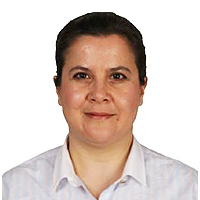Nuclear science and magnetic carbon: a promising way from a chemical method to detect and fight cancer and tumors/neoplasms
Published on: 17th April, 2023
In 2005 we reported for the first time on a chemical route aiming to synthesize stable magnetic carbon/graphite. By using the Nuclear Magnetic Resonance (NMR) technique we have verified that its magnetism is an intrinsic property of this synthesized material and not originated from ferromagnetic impurities of any kind. Through direct measurement of the local magnetic field using Carbon-13, we have concluded that its magnetism originated from defects in the structure. From its biocompatibility, we have been working on the use of magnetic carbon/graphite to deliver many compounds aiming to fight different diseases. Despite all the scientific and technological advances of the present day, cancer is a multifactorial and difficult-to-treat disease, killing hundreds of thousands of people a year worldwide. Therefore, the development of a new and efficient drug delivery system to fight cancer – among other diseases - is as important as the discovery of a novel active molecule. In this review of our own work, we show the drug delivery system named MAGUS® (an acronym for Magnetic Graphite Universal System) we have built based on nanostructured magnetic carbon/graphite. This is an innovative and promising system composed of a biocompatible nanostructured particle of magnetic carbon/graphite functionalized with different molecules and materials. MAGUS®, depending on what we link to its structure, is so versatile and can be used to detect a wide range of specimens, from tumors and cancers to chemical and biological agents used as non-conventional weapons. That is why we call it universal. In the present work, MAGUS® will be acting as a biosensor, where the magnetic carbon/graphite is functionalized with radioactive particles of Iodine-131 and antibodies of different types of cancer. Then, by focusing on both the antigen-antibody interaction and the spatial guiding through an external magnetic field we are providing our drug delivery system a double way to detect and reach just the target. Based on these strategies, the functionalized magnetic carbon/graphite will reach only the neoplasm and not the surrounding healthy cells around. In a general view, it means that we are giving specificity to the MAGUS® drug delivery system as a pioneering and effective way to detect and treat cancers. We are also working on this unprecedented and efficient drug delivery system using the principles of Boron Neutron Capture Therapy (BNCT) with Boron-10 instead of Iodine-131. BNCT technique uses neutrons as the external source and is frequently employed to treat specific tumors that are radio resistant or very difficult to kill using conventional radiation therapy. In summary, we show here for the first time that our Magnetic Graphite Universal System associated with nuclear techniques can be successfully used as a biosensor to detect and fight cancers and tumors with powerful features that conventional delivery drug systems and other treatments do not have at all.
Does change in cervical dilation after anesthesia impact latency after cerclage placement?
Published on: 24th April, 2023
Background: Pregnant individuals with early cervical dilation have a high risk for preterm birth. The authors encountered cases where cervical dilation increased after anesthesia administration for a cerclage. Objective: The primary objective was to assess if a change in cervical dilation after anesthesia administration for a cerclage was associated with a shorter latency to delivery. Study design: This was a retrospective chart review of pregnancies from January 1, 2011, to December 31, 2021, who had a cerclage and delivered at our institution. Maternal demographics, obstetrical history, operative details, and delivery information were collected. Multi-fetal gestations, un-indicated cerclages, and abdominal cerclages were excluded. The primary outcome was the difference in cervical dilation between the office and the operating room after spinal anesthesia administration. A multivariable regression was performed. Results: A total of 183 pregnancies were included. The mean gestational age at cerclage placement was 18 weeks (STDEV 3.6). Twenty-nine percent of patients (53/183) were more dilated in the operating room compared to the office The latency between cerclage and delivery was not different if there was a cervical change between these settings (p = 0.655). There was an increased risk for preterm delivery with dilation in the office (OR 1.01, CI 1.01 to 2.5), but not with dilation in the operating room (OR 1.4, CI 0.9 to 2.0). Conclusion: Cervical dilation between the office and the operating room is different. Pregnancies with more dilation delivered at earlier gestations. However, a change in dilation between the office and the operating room was not associated with a shorter latency.
Estimating minimum post-mortem interval in a Nigerian murder case using Chrysomya megacephala (Fabricius, 1794) (Diptera: Caliphoridae): The first use of forensic entomology
Published on: 26th April, 2023
Introduction: This paper presents the first application of forensic entomology in a murder investigation in Nigeria involving the remains of a 54-years victim, on January 9th, 2019 in a shaded wooded area in advanced decomposition, with no clear indication of the time of death. Objectives: To estimate the minimum post-mortem interval of a 54-year-old corpse recovered in the advanced decomposition stage using the blowfly Chrysomya megacephala and the Advance-Degree-day (ADD) method.Results: An autopsy report revealed multiple wounds to the forehead including a bullet hole. Dead embalmed dead maggots recovered from the body were identified as C. megacephala, and an accumulated degree-day model was used to estimate the minimum post-mortem interval. The findings revealed that the recovered larvae were still within the third-instar stage and had accumulated thermal energy between 58 hours (= 1.6 days, equivalent to 38.7 ADD) and 102 hours (= 2.8 days, equivalent to 68.0 ADD), suggesting that the body may have been exposed to insect activity between January 1st and 9th January 2019 after expanding the range to cater for some uncertainties. Conclusion: In this Nigerian murder case, forensic entomology used the calliphorid species C. megacephala to estimate the minPMI to be between 2 and 9 days before the body was discovered, which translates to 1st - 9th January 2019 after consideration of some uncertainties and limitations. This confirmed the crucial role that insects play in providing valuable evidence to complement forensic pathological findings in homicides when conventional methods failed. Notwithstanding difficulties with employing insect evidence in forensic investigations in Nigeria, the application of this modern forensic technique has the potential to aid in the resolution of many unsolved murder cases and expedite the delivery of justice. The ability of law enforcement agencies in Nigeria to use the potential of insects in criminal investigations can be improved through collaborations and training with professionals from diverse professions.
Understanding RNG Gas Quality through Execution at Newtown Creek WRRF RNG
Published on: 25th May, 2023
With each passing year a new record for global emissions is set (1) and policymakers and utility companies must embrace all avenues for decarbonization of energy. Universal adoption of electrification for every building and home by 2050 (2) is not practical, a balance must be struck between an equitable transition to cleaner energy supplies and ensuring uninterrupted, safe delivery of energy to utility customers. Renewable Natual Gas (RNG) is a molecule-for-molecule replacement of traditional geological natural gas with tangible life cycle emissions reductions. California continues to lead the way, initially starting with the low carbon fuel standard (LCFS) which aimed to reduce the carbon intensity of transportation fuel, and subsequently, Senate Bill 1440, which established RNG procurement goals including 12% RNG by 2030 (3). Other States are starting to adopt similar changes such as Oregon’s Senate Bill 98 and Colorado’s Senate Bill 21-264. As utilities attempt to transition the energy network, they must never compromise system safety and reliability. Recognizing that raw biogas has dangerous levels of contaminants of concern (COC) and must be conditioned to pipeline quality, its important utility companies better understand the methods with which methane is extracted and the testing protocols used to confirm performance. This paper highlights the equipment, processes, and testing regime National Grid and its partner the New York City Department of Environmental Protection (NYC DEP) deployed as part of its Newtown Creek RNG project, which successfully began injecting RNG into the NYC gas distribution network in October 2022.
Neonatal Mortality Rate among Twin and Singleton Births with the Gestational Age of 34-37 Weeks: A Population-Based Study
Published on: 28th June, 2023
Introduction: Twin pregnancy, compared to a singleton pregnancy, is associated with a higher risk of preterm birth and other neonatal complications. This study aimed to compare neonatal mortality rates and risk factors among births with the gestational age of 34 weeks - 37 weeks in twin and singleton pregnancies.Methods: The study design was cross-sectional and population-based. We extracted the data from the birth information registry in Iran. Mothers' and neonates' information was removed from the registry systems between 2018 and 2020. We used Statistical R software to compare neonatal mortality rate, demographic variables, and risk factors between two groups of twin and singleton neonates.Results: Out of 579,873 live births with a gestational age of 34 weeks - 37 weeks, 729 (1.4/1000) singleton and 54(0.77/1000) twins (one out of two) neonates died in the delivery room in the first hour of life. Of the neonates who left the delivery room alive, 3129 (4.9 per 1000) neonates had died (5.7/1000 singleton and 3.04/1000 twin). The neonatal mortality rate in hospitalized singleton neonates (1.85%) was higher than twin group (1.06%). After adjustment of other variables, the mortality rate in twin pregnancy was significantly lower than in singletons (p value < 1/1000), with an odds ratio of 0.47 (CI: 0.39 - 0.55). Antenatal corticosteroid treatment in the twin group was significantly higher than in singletons.Conclusion: Twin neonatal mortality rate was lower than singletons in the neonates with gestational age 34 weeks - 37 weeks. Clinicians could consider these results for delivery timing in uncomplicated twin pregnancies. Antenatal corticosteroid therapy can be considered to reduce the mortality rate of late preterm neonates in resource-limited countries.
Mechanism of Small Molecule Inhibitors of Phagocytosis
Published on: 3rd July, 2023
Immune cytopenias occur when the body produces antibodies that target specific hematopoietic cells, inducing extravascular antibody-mediated phagocytosis by monocyte-macrophages in the spleen and/or liver through activation of Fcγ Receptors (FcγRs). Immune cytopenias include Immune Thrombocytopenia (ITP), Autoimmune Hemolytic Anemia (AIHA), Hemolytic Transfusion Reactions (HTR), Hemolytic Disease of the Fetus and Newborn (HDFN), and Autoimmune Neutropenia (AIN). Thus, novel therapeutics that inhibit phagocytosis would be useful, especially for short-term use while other therapies are being evaluated. In our earlier studies, we successfully identified two small-molecule drugs able to inhibit in vitro phagocytosis with a low IC50 concentration and negligible toxicity. These drugs, known as KB-151 and KB-208, have the potential to be utilized as lead compounds for further studies, once their mechanism of action is more clearly understood. In this regard, we have developed preliminary results that suggest that these small molecules may bind to the Fc receptors on monocyte macrophages and block the subsequent attachment of antibody-opsonized red blood cells to prevent phagocytosis.
Evaluation of Heavy Metals Concentration in Poultry Feed and Poultry Products
Published on: 11th July, 2023
The study was conducted to determine the absorption of essential and non-essential trace minerals from poultry feed to poultry products. Poultry feed, liver, muscles, and egg samples were collected from six poultry farms in Rawalpindi and Islamabad. Mercury, Lead, Cadmium, Chromium, and Iron were analyzed in the samples using Inductively Coupled Plasma Optical Emission Spectrophotometer. Iron, Lead, and Chromium exceeded the permissible limits set by World Health Organization and National Research Council in Poultry feed. Lead was high in the liver, breast muscles, thigh muscles, egg albumen, and egg yolk. Chromium was found in feed, egg yolk, egg albumen, and two (02) of the liver and breast muscle samples. Mercury was not detected in any of the samples. The liver contains significantly higher concentrations of detected heavy metals as compared to thigh and breast muscles and egg yolk contained significantly high concentrations of Iron, Cadmium, and Lead as compared to egg albumen. Standards requirements for feed manufacturers and poultry farmers should be maintained to monitor and mitigate routes of entry of contaminants in the food chain.
Evaluation of the Antihyperglycaemic Activities, Safety and Phytochemical Profile of Celtis zenkeri Engl
Published on: 14th July, 2023
Objective: The study evaluated the hyperglycaemia-lowering effects, safety, and phytochemical profile of Celtis zenkeri leaf extract in order to justify its antidiabetic folkloric usage. Methods: Modified OECD test guidelines were used to assess its acute and sub-acute toxicity while its effect on blood parameters such as blood glucose, and haematological and biochemical levels were evaluated using appropriate assays. Both in vitro and in vivo antihyperglycaemic assays were used for the antidiabetic studies while histology of the pancreas, liver, and kidney of the rats was examined after treatment with the extract at 250, 500, and 1000 mg/kg for 21 days. GC-MS analysis was used to determine the chemical constituents of the extract. Results: The results obtained showed that the leaf extract of C. zenkeri was not toxic in rats at 5000 mg/kg. It elicited a significant decrease in the blood glucose levels of the animals but did not affect the haematological and biochemical components of normal rats. It significantly inhibited α-amylase and α-glucosidase actions and gave comparable activity to glibenclamide (5 mg/kg) at all time points at 200 and 400 mg/kg. The extract comparably reduced blood glucose levels with glibenclamide at 100 and 200 mg/kg on days 10 and 14 in drug-induced diabetic rats and maintained the histoarchitecture of the liver, kidney, and pancreas at 250 and 500 mg/kg.Conclusion: The study justified the ethnomedicinal use of C. zenkeri in diabetes management.
Electronic Health Record in the ICU: An Essential Need in the Modern Era
Published on: 27th July, 2023
One of the most significant changes in modern healthcare delivery has been the evolution of the paper record to the electronic health record (EHR). Despite incentives that provide reimbursements to hospitals and healthcare providers for adopting EHR technology, there is a large number of barriers that preclude its implementation. EHR has a great impact on a variety of healthcare outcomes, mainly favoring its use. Consequently, the development of effective implementation strategies is essential in modern healthcare society.
Studies of dose distribution to Lung and Stomach and Estimation of Second Cancer Risk due to Outfield Dose in Radiotherapy with 60Co Teletherapy Beam
Published on: 8th August, 2023
A critical component of the radiation regimen for treating cancer patients is the precise dose delivery to the treatment organ while minimizing the dose to the healthy tissue. This study aims to evaluate in-field organ dose and dose distribution outside the target organs to estimate the excess lifetime risk of second cancer. The study was carried out with a male Alderson Rando Phantom. 20 sets of thermoluminescence dosimeters (MTS-100) were used in this study. The in-field organs absorbed dose was measured by inserting TLDs at different geometrical depths of the left lung, right lung, and stomach, and for peripheral organs skin dose TLDs were placed at the surface of the corresponding organs. Target organs were irradiated at 100 cGy and 200 cGy by a 60Co teletherapy unit, and irradiated TLDs were read out by a RE-2000 TLD reader. For precise dose delivery to the cancerous organs by 60Co teletherapy, the depth dose correction factor for lung cancer treatment is 0.8667 ± 0.01, and for the stomach is 0.7856 ± 0.017. In the case of the treatment for the lung and stomach, the closest organs received significant doses compared to the other distant organs. Thus, the risk of second cancer due to the peripheral dose is obtained. The stomach is at the highest risk when the lung is the target and the liver is at the highest risk when the stomach is the targeted organ.
Prospective Coronavirus Liver Effects: Available Knowledge
Published on: 18th August, 2023
The global pandemic COVID-19, caused by SARS-CoV-2, affected millions of people. COVID-19 is known for its respiratory symptoms, but new research reveals it may also affect other organ systems, including the liver. This abstract reviews COVID-19 and liver function. The virus enters host cells through liver-expressed angiotensin-converting enzyme 2 (ACE2) receptors. Thus, viral infection and replication may target the liver. Virus-induced inflammation and cytokine production may also harm the liver. ALT and AST elevations are the most prevalent liver abnormalities in COVID-19 patients. Liver function test abnormalities frequently indicate serious illness and poor clinical outcomes. COVID-19 may worsen pre-existing liver diseases such as NAFLD and chronic viral hepatitis. Drug-induced liver damage (DILI) from COVID-19 therapies including antivirals and corticosteroids complicates liver complications care. Recent investigations have also shown that COVID-19 may cause long-term liver damage. In conclusion, COVID-19 infection, immune-mediated damage, and treatment problems may severely compromise liver function. Optimizing patient treatment and discovering targeted medicines requires understanding COVID-19's liver role. To reduce the effects of COVID-19 on liver function, further study is required to understand the mechanisms and long-term effects.
Case Report: Haultain’s Method Reposition for Subacute Uterine Inversion
Published on: 22nd August, 2023
Background: Uterine inversion is a rare obstetric emergency but potentially life-threatening condition. If these are not immediately diagnosed, the massive and underestimated blood loss can lead to hypovolemic shock. Case: Case of 24 years old woman was referred from the district Public Health Center with vaginal bleeding after delivery with abdominal pain. We found fundal height postpartum is 3 fingers above symphysis and confirmed a soft mass protruding inside the vagina at the local examination. The ultrasound cannot present the fundus of the uterus and impressed a uterine inversion. Stabilization for the patient is done with fluid resuscitation and blood transfusion. The patient planned for exploratory laparotomy and we confirmed uterine inversion. We did per abdominal reposition success which was managed by Haultain’s method. Conclusion: Uterine inversion should be considered in any patient with symptoms of hemorrhage and abdominopelvic pain, with the physical findings of a soft, congested, bleeding mass within the vagina on bimanual examination. Prompt treatment consists of fluid resuscitation and anatomical repositioning is needed.
Impact of Primary Cesarean Section on Grand Multiparous Women
Published on: 11th September, 2023
Background: Grand multiparty is common obstetrical problem, in Sudan large families is desirable for cultural and religious backgrounds and higher incidence of grandmultipra is expected, the risk factors associated with adverse maternal outcomes have yet to be adequately investigated among grand multiparity need to delivered by primary cesarean section.Objective: The main objective was to determine impact of primary cesarean section on grand multiparous, it is indications and complications.Methodology: It was a descriptive prospective cross-sectional hospital-based study conducted at Omdurman Maternity Hospital during period October 2016 to March 2017.An interview questionnaire was used for data collection. Demographic and clinical data concerning personal history, parity, indications of primary cesarean section, type of Cs, maternal complication and neonatal complications were recorded. Also, multiparous less than five delivery, previous lower segment caesarean section, known medical disorders except anemia and twin pregnancy were excluded.Results: During the study period total of 113 grand multipara included, incidence of primary cesarean section in grand multipara was 10%. Indication in our study 22.1% due to malpresentation, fetl distress 15% and prolonged first stage 13.4%, prolonged second stage 12.4% and antepartum haemorrhage 11.5%. Postpartum haemorrhage developed in 9.7%, hysterectomy 1.8%, uterine tear 5.4% bladder injury fetal laceration 3.6%, spinal anesthesia headache 7%, post-partum pyrexia 5.3%, sepsis 4.4%, urinary tract infections were 2.7%.Conclusion: The finding in this study showed 10% incidence of primary cesarean section in grandmultipra. The most indications of primary cesarean section in grandmultipra malpresentation, fetal distress, prolonged first and second stage of labour. Most CS were emergency.
Acute Inflammatory Reaction After Radiotherapy to Bilateral Orbital Metastasis from Melanoma
Published on: 15th September, 2023
Orbital melanoma is a subtype of periocular melanoma that can present from primary, secondary (arising from local invasion), or metastatic disease [1]. Melanoma metastasis to the orbit is rare with the majority of metastases occurring in subcutaneous tissue, nonregional lymph nodes, lungs, liver, brain, and bone [2]. Despite melanoma being relatively radioresistant, radiation therapy can be considered in an adjuvant or palliative setting [3]. In the palliative setting specifically, radiation therapy is highly effective in alleviating symptoms due to mass effect [3]. However, significant ocular and orbital complications may occur as a direct result of radiation therapy.
Hydrogel-Based Formulations for Drug Delivery to the Posterior Segment of the Eye
Published on: 12th September, 2023
Hydrogel-based formulations hold significant promise for treating ocular diseases that impact the posterior segment of the eye. These formulations exhibit the ability to surmount ocular barriers and offer sustained drug release, rendering them efficacious drug delivery systems. This article addresses the challenges linked to treating disorders affecting the posterior eye segment and underscores the imperative for less invasive drug delivery methodologies. We further delve into diverse contemporary ocular dosage forms, encompassing gels, nanostructures, and implants, with a specific emphasis on hydrogels. Hydrogels offer several merits, including precise targeting, sustained release, enhanced bioavailability, and non-invasiveness. Moreover, they curtail the risk of adverse effects and foster patient adherence. An enthralling advancement is the amalgamation of hybrid drug delivery systems, integrating nanoparticles, liposomes, dendrimers, and stimuli-activated nano-systems, with hydrogels for posterior eye ailment treatment. These hybrid nano-systems exhibit promise in enhancing drug stability, prolonging drug release, and pinpointing specific tissues within the posterior segment. We also provide an overview of ongoing clinical trials and approved hydrogel-based drug delivery systems, like Retisert and Ozurdex. These systems have demonstrated efficacy in managing chronic non-infectious uveitis, Age-related Macular Degeneration (AMD), and diabetic macular edema. Nevertheless, challenges persist, including optimizing bioavailability, maintaining drug stability, and implementing personalized treatment approaches. The incessant evolution of gel-based drug delivery systems stands to substantially enhance patients’ quality of life and establish new benchmarks in treating posterior eye diseases. The future of ophthalmology brims with excitement, as gel-based drug delivery systems hold the potential to revolutionize ocular therapies, providing effective remedies for an array of vision-related afflictions.
A Rare Case of an Acquired Isolated Factor VII Deficiency was Discovered in a 23-Year-Old Female Patient
Published on: 20th September, 2023
Introduction: Factor VII (FVII) deficiency, a rare bleeding disorder, can manifest as an autosomal recessive congenital or an acquired coagulopathy. Acquired FVII deficiency, although infrequently reported, presents unique challenges in understanding its mechanisms and identifying underlying causes. Case presentation: We present a case of acquired FVII deficiency discovered in a 23-year-old female patient with no apparent underlying disease. The patient exhibited spontaneous ecchymosis and gingival hemorrhage, along with low FVII activity and isolated prolongation of prothrombin time. Extensive laboratory investigations excluded liver dysfunction, familial deficiency, vitamin K deficiency, and inhibitory antibodies. Prompt treatment with Fresh Frozen Plasma (FFP) and bypassing agents resulted in a favorable response and resolution of hematomas. Conclusion: Acquired FVII deficiency was identified with bleeding symptoms in association with prolonged prothrombin time and a low level of FVII activity. In literature, this deficiency has been associated with various conditions such as sepsis, aplastic anemia, stem cell transplantation, and neoplasms, although approximately 14% of cases remain idiopathic. Clinical outcomes remain generally poor, with limited complete remissions reported.
Reverse Breech Extraction versus Vaginal Push before Uterine Incision during Cesarean Section with Fully Dilated Cervix and Impacted Fetal Head
Published on: 10th October, 2023
Purpose: To compare between the two commonly used methods to deliver the fetus in emergency cesarean section with fully dilated cervix and impacted fetal head; vaginal push up of the fetal head and reverse breech extraction regarding safety and efficacy.Methods: A retrospective observational study was conducted 152 women underwent emergency CS with fully dilated cervix and impacted fetal head were divided into two groups; Group 1, vaginal push (n = 96) and Group2, reverse breech delivery (n = 56). Data variables were collected and analyzed to evaluate whether either method is more safe regarding maternal and fetal outcomes.Results: There was a significant higher percentage of extension of uterine incision in group 1 (p = 0.002). Also, there were significant higher mean values of operative time and operative blood loss in group 1 (p = 0.008 and 0.015; respectively). On the other hand, there was a significantly shorter uterotomy to delivery time in group 1 (p < 0.001). There was a significantly higher mean value of APGAR score at one minute in group 1 (p = 0.043) but no significant difference between the two groups regarding APGAR score at five minutes, atonic PPH, postoperative blood transfusion and hospital stay.Conclusion: Vaginal push technique was associated with significantly higher intraoperative maternal morbidity but postoperative maternal morbidity and fetal outcomes were comparable between both groups. Push method (after uterine incision) is still the preferable method and larger studies are required to assess the fetal safety with reverse breech extraction.
Postdate Pregnancy Maternal and Fetal Outcomes among Sudanese Women
Published on: 10th October, 2023
Background: Postdated pregnancy is one of the most common obstetric problems associated with increased maternal morbidity, prenatal morbidity, and mortality. Pregnancy at 37-40 weeks of gestation is called the term from the last menstrual period. If the pregnancy exceeds 40 weeks, it is called a postdated pregnancy, but when pregnancy is prolonged beyond 42 weeks, it is called post-maturity or post-term pregnancy. Objective: This study aimed to determine the adverse effects of postdate pregnancy on mothers and fetuses.Methodology: This was a descriptive, prospective, cross-sectional, hospital-based study conducted at Omdurman Maternity Hospital from January 2018 to June 2018.An interview questionnaire was used to collect data. Data were collected by trained doctors in the labor room. One hundred and thirty-eight (138) postdated pregnant women were included in this study after obtaining informed consent through a structured questionnaire. Demographic and clinical data concerning personal history, booking status, mode of delivery, maternal complications, and fetal complications were recorded.Results: During the study period, 2751 women delivered, of which 138 were postdated deliveries, with a prevalence of 5%. Most women's age range was 31-34 years 48.6%). Their education level was mostly secondary school (42%). Primigravida 65%), booked were 75.4%. Previous history of postdate pregnancy was 34.1%, normal vaginal delivery was 79 .7%, cesarean section was 14.5%, and instrumental delivery 5.8%. Cesarean section indications were cervical dystocia (14.4%), cephalopelvic disproportion (9.5%), meconium-stained liquor with fetal distress (33.3%), pathological cardiotocography (CTC) (19%), and failure to progress (23.8%).Maternal complications included post-partum hemorrhage (PPH) (7.2%), perineal tears (.7%, cervical tears (1.4%), and postpartum infections (1.4%). Fetal complications were 14.5%, Shoulder Dystocia 2.9%, asphyxia (6.5%), and meconium aspiration (5.1%). The mean APGAR score was 1.1667, less than three in only 3.6%, and > 7 in 86.9%.Neonatal death was 3%. Approximately 18 neonates were admitted to the Neonatal Intensive care unit (NICU) and only five of them were admitted for more than one week.Conclusion: Postdate pregnancy prevalence in this study was 5%, which was associated with maternal risk of cesarean section delivery, instrumental delivery, postpartum hemorrhage, and postnatal infection.
Myosteatosis and Frailty Factors associated with the occurrence of Complications in Cirrhotic patients: MYOFACC study
Published on: 17th October, 2023
Background and aim: Cirrhosis leads to sarcopenia and to life-threatening complications in decompensated stages. The objective of this study is to show the impact of the loss of muscle mass and function on hepatic decompensations. Methods: Our study compares a group of cirrhotic patients with controls matched with the same sex and age. A questionnaire was created to collect demographic, anthropometric, and cirrhosis characteristics. Several CT scan sections were analyzed and the average measurements have been grouped into tertiles to estimate the impact on cirrhotic complications.Results: Our study included 33 controls and 33 cirrhotic patients of which 59.4% had NASH. Anthropometric characteristics were similar in cirrhotics men and women. Grip strength was significantly lower in cirrhotic men. Using the skeletal muscle index we found 39.39% of cirrhotic patients were sarcopenic mostly men 84.61%. In Cirrhotic men, the density of the psoas and paravertebral muscles was lower than in controls. In women psoas and paravertebral muscle areas were comparable and the total muscle surface in cirrhotic patients was higher. There was a negative correlation between this surface and the density of the psoas (r = -0.293 p = 0.017) indicating the presence of myosteatosis in women. Analysing tertile groups showed a significantly higher incidence of complications related to liver disease and liver failure in patients with the psoas and paravertebral muscle density in the lowest tertile and in the frail population according to the frailty index.Conclusion: Cirrhotic patients have myosteatosis and sarcopenia associated with a higher incidence of complications related to hepatic failure.
Management of Congenital Cervical Teratoma with Application of EXIT Protocol - Case Report
Published on: 18th October, 2023
Background: Congenital teratomas are relatively rare neoplasms, which occurs in about 1:20,000 to 1:80,000 births, and only 1.5% to 5% of which are neoplasm of the cervical. They can be diagnosed through ultrasound during pregnancy and, if not properly handled, have a high mortality rate. Airway compression is a secondary complication following mortality. Case report: A solid-cystic mass was identified in the anterior cervical region of a 30-week-old fetus during an ultrasound scan. EXIT (Ex-Utero Intrapartum Treatment)-to-airway procedure was performed by a multidisciplinary team composed of obstetricians, anesthesiologists, neonatologists and pediatric surgeons to remove the neoplasm. The procedure occurred upon delivery of the fetus, resulting in a positive outcome with neonatal survival. In this case, the fetus was in breech position, and, differently from the usual EXIT protocol, it had to be completely extracted before guaranteeing airway flow. Conclusion: Although congenital teratomas are a rare condition with complex treatment, it is possible to achieve a satisfactory outcome when adequate planning and protocol are established.
















